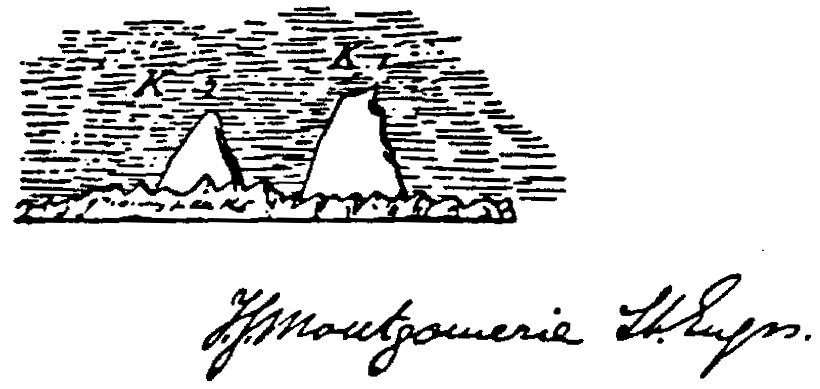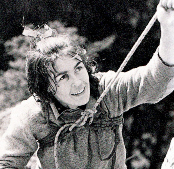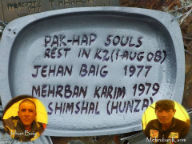K2 AND THE INVISIBLE FOOTMEN
HISTORICAL TIMELINE
To provide a thorough context behind K2 and the Invisible Footmen, we’ve compiled a timeline of the major events that shaped the mountain’s history, from the 1856 European survey that gave K2 its name to the landmark all-Pakistani expedition in 2014. In the intervening century and a half, K2 has been the site of spirited international competition, tragic climbing accidents and remarkable feats of mountaineering. These accomplishments, however, would have been impossible without the skilled local porters and climbers who live in the shadow of the great mountain.
At 8,609 meters (28,245 ft) as of the most recent survey, K2 is the second-tallest mountain on the planet.

Climbers Who Summited in 2014
Thank you to 8000ers.com and Eberhard Jurgalski for compiling this list.
| 1. Tamara Lunger (Italy) 2. Nikolaus Gruber (Italy) 3. Radek Jaros (Czech) 4. Travnicek Jan (Czech) 5. Adrian Hayes (UK) 6. Hassan Jan (Pakistan) 7. Ali Durani (Pakistan) 8. Rahmat Ullah Baig (Pakistan) 9. Ghulam Mehdi (Pakistan) 10. Ali (Pakistan) 11. Muhammad Sadiq (Pakistan) 12. Michele Cucchi (Italy) 13. Dawa Yangzum Sherpa (Nepal) 14. Pasang Lhamu Sherpa (Nepal) 15. Maya Sherpa (Nepal) 16. Giuseppe Pompili (Italy) 17. Amin Baig (Pakistan) 18. Ferran Latorre (Spain) 19. Chris Jensen Burke (New Zealand) 20. Lakpa Sherpa (Nepal) 21. Al Hancock (Canada) 22. Alexandros Aravidis (Greece) 23. Luo Jing (China) 24. Mr. Chhiring Sherpa (Nepal) 25. Mingma Gyabu Sherpa (Nepal) |
26. Chhiji Nurbu Sherpa (Nepal) 27. Mingma Dorchi Sherpa (Nepal) 28. Ngima Dorchi Sherpa (Nepal) 29. Pemba Sherpa (Nepal) 30. Lakpa Sherpa (Nepal) 31. Ngatasi Sherpa (Nepal) 32. Lakpa Temba Sherpa (Nepal) 33. Samuli Mansikka (Finland) 34. Alan Arnette (USA) 35. Matthew Dupuy (USA) 36. Garrett Madison (USA) 37. Kami Rita Sherpa (Nepal) 38. Fur Kancha Sherpa (Nepal) 39. Kami Tshering Sherpa (Nepal) 40. Reza Shahlaee (Iran) 41. Zdravko Dejanovic (Macedonia) 42. Mingma Gyalje Sherpa (Nepal) 43. Boyan Petrov (Bulgaria) 44. Marcin Kaczkan (Poland) 45. Janusz Golab (Poland) 46. Miguel Angel Perez (Spain) – died on descent 47. Lien Choong Luen (Singapore) 48. Jamling Bhote (Nepal) 49. Fazal Ali (Pakistan) |

 K2 was named by T.G. Montgomerie of the Survey of India as he logged peaks in the Karakorum as “K1, K2…” as viewed from Kashmir. Because K2 was not prominently visible from any area trading routes, it did not have a common local name at the time in India. In China, it was known simply as Qogiri (pronounced “Chogori”), meaning “Great Mountain.”
K2 was named by T.G. Montgomerie of the Survey of India as he logged peaks in the Karakorum as “K1, K2…” as viewed from Kashmir. Because K2 was not prominently visible from any area trading routes, it did not have a common local name at the time in India. In China, it was known simply as Qogiri (pronounced “Chogori”), meaning “Great Mountain.” THREE WOMENWanda Rutkiewicz of Poland (right), Julie Tullis of Britain, and Liliane Barrard of France – became the first 3 women to stand on the summit. Unfortunately, Julie and Liliane died on the descent. This season later became known as the “worst summer on K2”, with a total of 13 deaths. All three women were climbing without supplemental oxygen.
THREE WOMENWanda Rutkiewicz of Poland (right), Julie Tullis of Britain, and Liliane Barrard of France – became the first 3 women to stand on the summit. Unfortunately, Julie and Liliane died on the descent. This season later became known as the “worst summer on K2”, with a total of 13 deaths. All three women were climbing without supplemental oxygen.